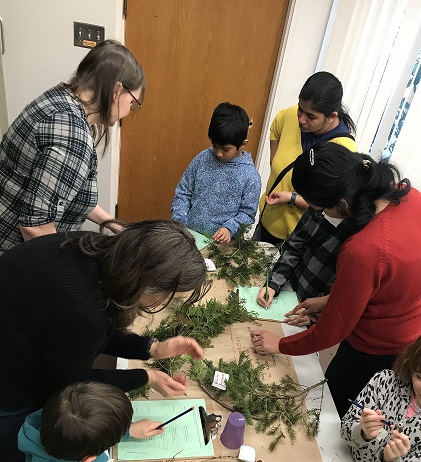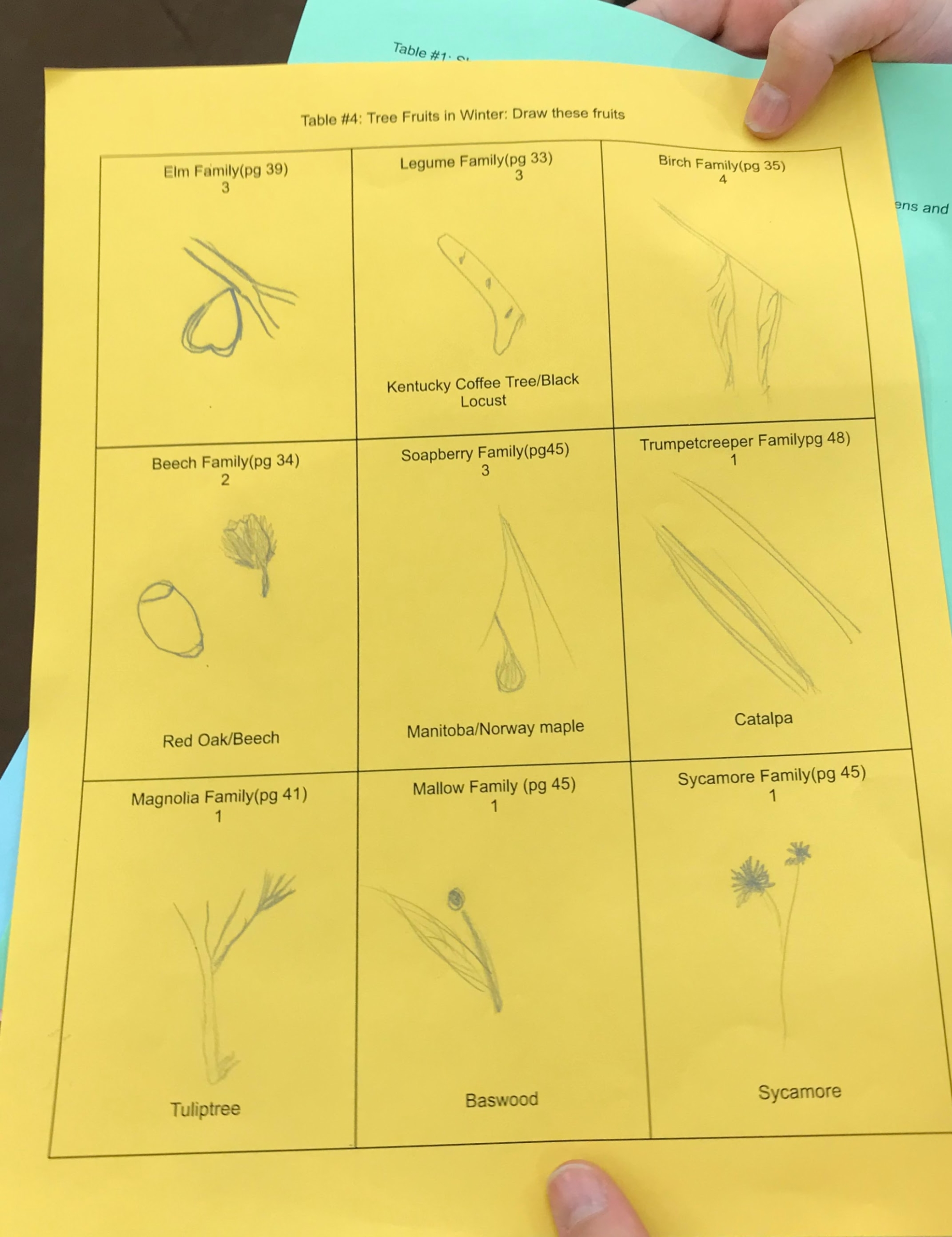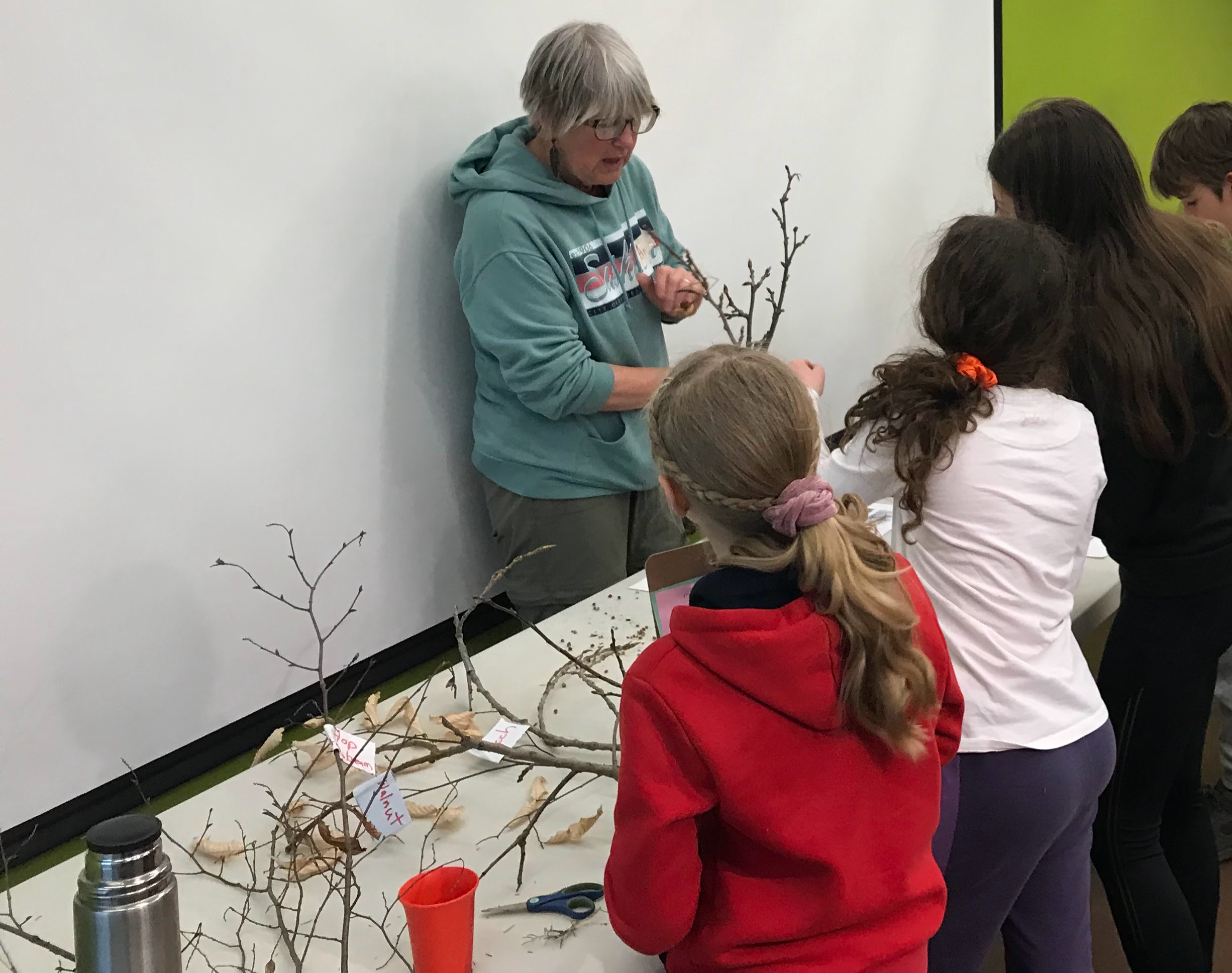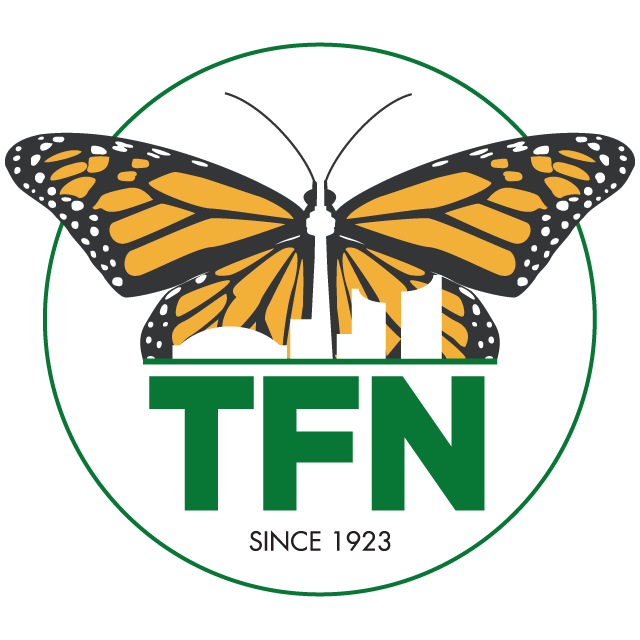The TFN Juniors gathered on Saturday March 9th to explore ‘Winter Tree ID’’. It was pouring rain the entire morning, so it wasn’t a great day to be out in the field exploring! However, the Toronto Botanical Gardens allowed us to use one of their indoor meeting rooms –Studio #1. Lo and behold we were safe and sound indoors, where we were able to carefully observe lots of Evergreen and Deciduous specimens.
Instead of the usual Land Acknowledgement, we started out the workshop with a dramatization of an Anishnabee legend about the origin of Deciduous trees losing their leaves. Six of the kids represented the trees. Bineshiinh, a little bird, is injured and cannot fly south. Three Deciduous trees, Birch, Oak and Willow fail to help Bineshiinh, but the White Spruce, White Pine and White Cedar all make shelter and food available to him. Now Giiwedin, the North Wind roars across the land. He asks Gitschi-manitou, the Great Spirit, if he may tear down the leaves of all the trees as he passes. Gitshi-manitou says, ‘Not all… the leaves on the trees who helped Bineshiinh should stay, but those who refused to help may be torn down.’ So it was, and so it is.
We saw in this story, the Indigenous view of nature as a community of inter-dependent creatures who help each other. We also realized that Anishnabee children in years gone by, would have learned the names of the trees by hearing this story.
After the dramatization, the participants visited stations manned by volunteers, and did match-ups as they went. They sharpened their observation skills, feeling the shape of short needles and examining their point of attachment. One child commented afterwards, ‘I just wasn’t sure I was seeing the swollen base of the Balsam needle’. I was wowed for that child who read the description so carefully and made an effort to see it! We also examined cones, putting them in order from smallest to biggest, and studied twigs with bunches of long needles, native and non-native.
Turning to Deciduous trees, the kids studied and identified tree buds, and drew fruits.
We were very blessed to have two new volunteers help out at the stations, June D’Souza and Mary Anne Schoenhardt, who joined our seasoned volunteers to help the kids with their observations. We are excited for new knowledge that we can put into action at future outings!




